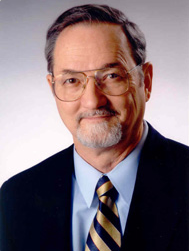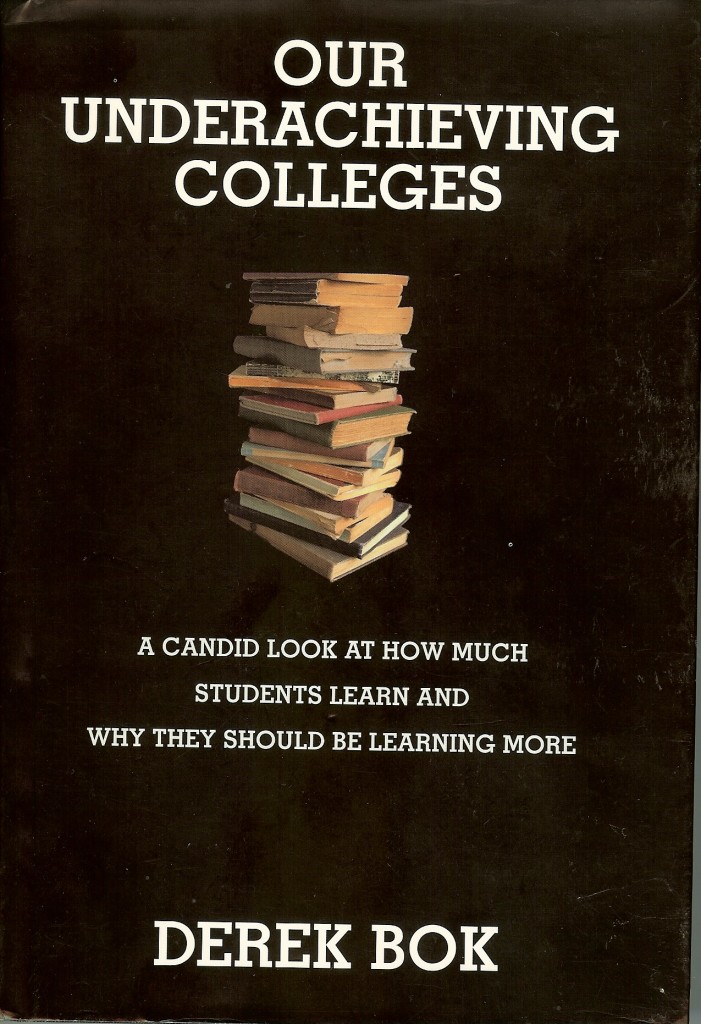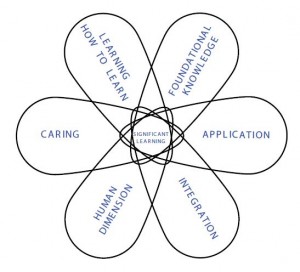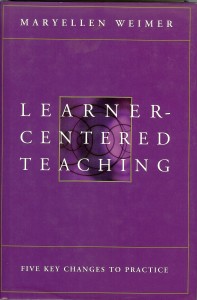Creating Significant Learning Experiences: An HETL Interview with Dr. Dee Fink
HETL note: Dr. Dee Fink is the author of Creating Significant Learning Experiences for College Classrooms: An Integrated Approach to Designing College Courses,
published in 2003 (San Francisco: Jossey-Bass). Dr. Fink asserts that
to create more significant learning experiences for students, teachers
need to shift from a content-centered approach to a learning-centered
approach. In so doing he addresses the question “What kinds of learning
will be significant for students, and how can I create a course that
will result in that kind of learning?” HETL interviewed Dr. Fink via
Skype to dig deeper into this question.
 Bio: Dr. Dee Fink currently works as a consultant in higher education (www.finkconsulting.info).
In the last several years, he has led numerous workshops on integrated
course design at conferences and campuses in the US, Canada, Latin
America, Europe, the Middle East, and Asia. He served as the founding
director of the Instructional Development Program at the University of Oklahoma
(1979-2005). He received two awards for teaching excellence: He was the
University of Oklahoma recipient of the national teaching award
presented by the American Association of Higher Education (AAHE), the Jaime Escalante
“Stand and Deliver” Award, April, 1989, and the recipient of the
Outstanding Faculty Award, College of Liberal Studies, University of
Oklahoma, 1992. Dr. Fink has been active for thirty years in the POD Network
[Professional and Organizational Development] in Higher Education. He
served as President of POD in 2004-2005. Dr Fink can be contacted at dfink40@gmail.com
Bio: Dr. Dee Fink currently works as a consultant in higher education (www.finkconsulting.info).
In the last several years, he has led numerous workshops on integrated
course design at conferences and campuses in the US, Canada, Latin
America, Europe, the Middle East, and Asia. He served as the founding
director of the Instructional Development Program at the University of Oklahoma
(1979-2005). He received two awards for teaching excellence: He was the
University of Oklahoma recipient of the national teaching award
presented by the American Association of Higher Education (AAHE), the Jaime Escalante
“Stand and Deliver” Award, April, 1989, and the recipient of the
Outstanding Faculty Award, College of Liberal Studies, University of
Oklahoma, 1992. Dr. Fink has been active for thirty years in the POD Network
[Professional and Organizational Development] in Higher Education. He
served as President of POD in 2004-2005. Dr Fink can be contacted at dfink40@gmail.com
HETL interviewers: Patrick Blessinger and Krassie Petrova
HETL: Dr. Fink, in your book Creating Significant Learning Experiences,
you ask an important question faced by all educators who are interested
in improving learning: Should we make the effort to change, or not?
Some would say that major change is not necessary because the
traditional model of higher education has worked well; it has helped
create an explosion of new knowledge and has established a standard of
living never seen before. So, why do you believe change is necessary?

Dee Fink [DF]: There
are two major observations that make me believe change is necessary.
The first is all the evidence, using multiple criteria, that
we are not currently doing a good job in higher education. One of
these is a study by Derek Bok [i], the former president of Harvard University.
He did some careful research on how well American students were
achieving eight kinds of learning we would all like to see in college
graduates, e.g., how to communicate, how to think, how to live with
diversity, preparing for a global society, etc. His conclusion for all
eight kinds of learning was the same: Students are achieving each of
these desirable kinds of learning to a degree but nowhere near what they
could be and should be achieving.
The second source of concern is the new kinds of learning that are being identified as important in the 21st Century. AAC&U
(Association of American Colleges and Universities) recently asked a
major set of civic and corporate leaders what kinds of learning they
thought were essential today. They identified, among others:
Information literacy, teamwork and problem solving abilities,
intercultural knowledge and competence, ethical reasoning, integrative
learning, preparing for lifelong learning. These are similar to the
kinds of learning in my taxonomy of significant learning.
The problem is that most professors are so focused on communicating
the content of their discipline, that they do not even see these
additional, possible kinds of learning. Our students, though, are going
to live their lives in the 21st Century, and it is already
quite clear that life in this century is going to require more than just
“knowledge of the various disciplines.”
HETL: Dr. Fink, what specific types and levels of
change are you referring to, and do these changes require an investment
by educators?
DF: We need changes at three levels: the classroom level, the organizational level, and the national level.
At the classroom level, college professors need to learn about and
use the many new ideas about teaching and learning that have been
developed in the last two decades. The scholars of teaching and
learning in higher education have generated a number of concepts and
theories that can make a major difference in student engagement and
student learning. These include active learning, learning-centered
course design, effective use of small groups, educative assessment,
reflective writing and learning portfolios, a deeper understanding of
how people learn, deep learning, and others.
If we want our students to achieve more powerful kinds of learning, college professors need to learn about and use more powerful kinds of teaching.
For this to happen, we will need the second kind of change, at the
organizational level. First and foremost, this means colleges and
universities need to find ways to support and encourage college teachers
in their effort to learn and use new ideas about teaching and
learning. This is likely to involve new ways of evaluating teaching,
evaluating faculty work, and rewarding faculty – all challenging tasks.
A third level of change must occur at the national level.
Organizations involved in higher education that can influence individual
universities – disciplinary associations, accrediting associations,
quality assurance organizations, and ministries of higher education in
the countries that have them – need to use their resources and leverage
to encourage greater attention by universities to good learning and
teaching.
In the USA, there is growing interest in such changes. In Europe, the Bologna Process
has begun to encourage institutions to set learning outcomes for the
whole institution; they call them “campus-wide competencies.” In other
regions of the world, I see a steadily increasing realization that
better kinds of learning by university graduates are needed, more than
just so many hours of seat-time and the ability to pass traditional
tests.
HETL: Dr. Fink, how can resistance to change be overcome?
DF: The most effective way to deal with any
resistance to change is to help people understand that a particular
change is what they already want.
When working with professors, we need to recognize that they
obviously do not enjoy seeing disinterested students in their courses,
or the evidence of lackluster learning in the final exams. If we can
help them see that new ways of teaching can make dramatic changes in
both these situations, it would go a long way toward helping professors
take a more positive attitude toward learning about new ways of
teaching.
At the university level, we badly need a means of measuring the
general quality of the educational programs at different institutions.
Institutional leaders are well aware that they are competing for
students, faculty, funds and prestige. If they could be “incentivized”
to focus institutional attention on creating better curricula and
promoting better teaching and learning across the whole campus, this
would make a huge difference in higher education, nationally and
globally.
HETL: Dr. Fink, if the reward system for faculty is
based upon the research they do, i.e., “publish or perish”, and not
specifically on the quality of teaching or on learning outcomes, then
how will faculty be motivated to invest in developing student- centered
learning?
DF: This is part of the institutional change that I
just mentioned. Institutions need to find a reliable way to evaluate
teaching, and then to give more weight to that in the overall assessment
of faculty work.
Some institutions do a good job of evaluating teaching with
procedures going beyond that of just collecting student questionnaires.
But there also needs to be a culture-change on most campuses. When
faculty vote (as is typical in most institutions in the USA) on annual
merit raises or tenure questions, they need to put weight on the quality
of teaching done and the learning outcomes – as well as on the
traditional criteria of publications and grant dollars. To do this,
they have to have faith in the way teaching is evaluated locally.
In an article published in 2008 [ii], I outlined a way of evaluating teaching that is focused on four major performance areas:
- The quality of the professor’s course design, e.g., learning & assessment activities aligned with good learning goals;
- How well they interacted with students, e.g., enthusiasm, clarity, fairness;
- The quantity and quality of student learning; and
- Efforts to get better each year as a teacher, i.e., learning new ideas, changing the way they teach.
Universities would need different sources of information and criteria
for each of these. Having standards for good teaching would accomplish
two things. It would alert teachers that this is what they need to pay
attention to if they want high teaching evaluations, and it would allow
the university recognize and reward those teachers who really are
performing well in these areas.
HETL: Dr. Fink, you make a distinction between a
content-centered approach to course design versus a learning-centered
approach. Can you briefly describe the differences between the two
approaches, and why you believe a learning-centered approach is more
effective?
DF: When we design a course using the
content-centered approach, we basically do two things only: Identify the
major topics, and then decide how much time we are going to spend on
each. Our attention is focused on the relative importance of the
different aspects of content.
When we use a learning-centered approach, the first thing we need to
do is identify the kinds of learning we want our students to engage in.
Then we need to identify the learning and assessment activities needed
for each kind of learning:
- What will students need to do, to achieve that kind of learning? And,
- What will they need to do, for them and us to know how well they are achieving each kind of learning?
One major problem with the content-centered approach is that it tends
to put teachers in an “information dispensing” mode of operation. We
organize lots of information about the content of the course, and then
try to “dump it” into students heads. Unfortunately, after the course
is over, they often “dump it out”, i.e., they have the retention problem
I mentioned earlier.
Another major problem is that content-centered learning only supports
one kind of learning, what I call “Foundational Knowledge”: A basic
understanding of terms, concepts, principles, possibly with some basic
application knowledge. Students today need a lot more than that.
HETL: Dr. Fink, when you say students today need “a lot more than that”, you are presumably referring to the concept of significant learning. What exactly is significant learning?
DF: Significant learning, as I use that term, refers
to learning that meets two criteria: (1) learning that lasts beyond
the end of the course, i.e., students retain the learning, and (2)
learning that has an impact on their personal, professional, social or
civic life, i.e., it changes how they think, feel, or act in their
lives.
For several decades, I have been asking students: “Have you ever had a
course that had a major impact on your lives, and when it did, what was
it you learned that had an impact on your life?” When I did my own
‘factor analysis’ of their answers, I came up with the six categories in
the taxonomy of significant learning.
Sometimes
students said there was some content and basic application skills that
were important. But more often, they referred to the following kinds of
learning (my label for each kind of learning is shown in parentheses):
- complex application skills (Application),
- how to connect one kind of knowledge with other kinds of knowledge (Integration),
- understanding themselves and how to interact with others vis-à-vis a particular kind of knowledge (Human Dimension),
- the values and interests that can be associated with new kinds of knowledge (Caring), and
- how to keep on learning about a subject after the course is over (Learning how to learn).
HETL: Dr. Fink, you contend that traditional
instructional methods are not very effective in achieving important
kinds of student learning. Why do you believe this to be so and what are
some of the problems faced by teachers using traditional instructional
methods?
DF: First, let me identify what I mean by
“traditional” ways of teaching. In general, this refers to a
predominant reliance on lectures, homework and textbooks. In the
humanities, this is often augmented by whole-class discussions, and in
the sciences and engineering, by labs. Good things can happen with
these methods, but student learning can and needs to be made even
better. Here are the problems that teachers face when they cling to the
traditional methods.
First, there is a serious problem with students retaining their
knowledge. In one study [iii], students’ performance at a “final” exam
dropped 50% only two weeks after the initial taking of that exam. In
another study [iv] it was found that students who had completed a
particular course performed only 5-10% better than people who had never
had the course (on a test on the course topic, taken one year after
finishing the course).
Second, traditional teaching runs a serious danger of being boring.
We see evidence of that in professors’ complaints about how often their
students are reading newspapers in class, or checking their email. But
think about it from the students’ perspective: How exciting can it be,
to sit in a class day after day, where they only listen to one person
and see nothing but the backs of other people’s heads?
Finally, teaching aimed primarily at conveying knowledge is simply outdated in the 21st
century. Students can look up all this information on their cell
phones faster than we can talk about it! They need to be doing
something else, both in-class and out-of-class.
HETL: Dr. Fink, what is this “something else” that
teachers need to be doing? That is, if teachers accept your challenge
of formulating learning outcomes for their courses such as you describe
above, how can they achieve these new and ambitious kinds of learning?
They have difficulty achieving their current learning goals, which are
more limited than what you propose.
DF: You are absolutely right in raising this
question. To achieve more powerful kinds of learning, teachers will
need to use more powerful kinds of teaching. The good news is that the
scholars of teaching and learning have developed an extensive set of new
ideas about teaching and learning in the last two decades. Let me
mention some.
- Some of these are theories dealing with how students learn (e.g.,
learning styles, how the brain works; see also the recent book on the 7
principles of how students learn [v].
- Others pertain to some of the fundamental tasks of teaching:
- Learning-centered course design
- Classroom Assessment Techniques
- Service learning
- Collaborative learning
|
- Active Learning
- Educative assessment
- Assessment rubrics
- Learning portfolios
- Teaching strategies, e.g., problem-based learning, team-based learning, project-based learning, and inquiry-based learning.
|
|
- Others deal with some of the special situations and needs in teaching, for example:
- How to deal with large classes
- How to deal with beginning students
- How to teach creativity.
Any teacher who can learn about and apply one or more of these
educational ideas will see a substantial positive response from
students. If they can use two or three of these ideas, the impact will
be even more dramatic.
Anyone who aspires to the kinds of learning in my taxonomy will
definitely need to start using several of these new, more powerful ways
of teaching. And if they do, they will start to see more significant
learning start to happen – and for many professors, the joy of teaching
will come back. This is what many people who have read my book or taken
my workshop report back to me: “Teaching is exciting again. This is
why I wanted to be a teacher, to see students excited about learning.”
HETL: Dr. Fink, some might contend that this
approach is culture-specific. What is your experience in implementing it
in countries with different cultures?
DF: One of the exciting aspects of my consulting
experience have been the invitations to do faculty workshops in 13
countries around the world, in Latin America, Europe, the Middle East,
New Zealand, and in several countries in Asia.
I can say, without reservation, that faculty members have responded
enthusiastically to such things as learning-centered course design,
small group work, and educative assessment. I have also had feedback
from teachers in all these regions that, when they tried these ideas in
their teaching, students responded very positively. Sometimes,
especially in countries with strong traditions of lecturing, the teacher
had to explain to students why they were doing what they were doing.
But when they did that, students liked the new ways of learning much
better. They liked the higher level of engagement and they could see
the value [i.e., significance] of what they were learning much more
clearly.
HETL: Dr. Fink, you state that learning should be an
experience and not just a set of activities and that the teacher plays a
critical role in shaping that experience. So, what should be the proper
relationship between teacher and student in achieving significant
learning outcomes?
DF: Obviously both teachers and students must
fulfill their respective responsibilities for good learning to happen.
The teacher structures the learning experience initially but it is the
student who does the work of learning.
In
her book [vi], Maryellen Weimer made the important suggestion that
teachers can both empower and motivate students by sharing some of the
decision-making power with the students.
In addition professors need to learn how to use their expertise, not
just to make an organized presentation of what they know, but to
formulate valuable learning outcomes, create learning and assessment
activities that embody authentic tasks and standards of performance for a
particular subject, and develop a positive, supportive relationship
with students.
Students, the other major party in this process, need to develop a
better understanding of what constitutes good learning and good
teaching, and develop the skills for good learning. This will require
help from their teachers and from university programs for beginning
students.
It then becomes the responsibility of university leaders to find ways
to encourage and support both faculty and students in the proper
fulfillment of their respective responsibilities.
HETL: Dr. Fink, in summary, you contend that
improving student learning starts with developing a new way of thinking
about teaching and learning. How do we begin to do that?
DF: The first thing that has to happen, obviously,
is that someone has to care, to care about the quality of teaching and
learning in higher education. Then whoever cares has to develop a
vision of what would have to happen to improve the quality of teaching
and learning. Finally, whoever has this vision has to find a way to
promote that vision; this generally will require both “top-down” and
“bottom-up” processes.
For the bottom-up part, individual professors need to spend more time
learning about the many new ideas about teaching and learning that are
now available, and then use them. This is what faculty development
programs are trying to achieve, where they exist.
The problem with many of these programs, though, it is often only the
people inclined to be “early adopters of change”, i.e., 15-20% of all
faculty members, who participate. To increase the proportion of the
faculty who regularly and continuously engage in instructional
development, there also needs to be change at the organizational level;
this is the top-down part of the process.
Campus leaders need to send a message:
“This matters. This is not optional; faculty improving their
capabilities as professional educators is essential for this institution
to fulfill its educational mission.”
This can be done by promoting a change in the campus culture and/or
by changing campus policies for things like evaluating teaching.
Institutions that succeed in making these changes are seeing a clear
shift in the quality of teaching and, as a result of that, in the level
of student engagement and the quality of student learning.
References
[i] Bok, D. (2006). Our underachieving colleges: A candid look at how much students learn and why they should be learning more. Princeton, NJ: Princeton University Press.
[ii] Fink, D. (2008). Evaluating teaching: A new approach to an old problem. In To Improve the Academy, 26. An annual publication of the POD Network in Higher Education. SF: Jossey-Bass, 2008.
[iii] McLeish, J. (1968). The lecture method. Cambridge, England: Cambridge Institute of Education.
[iv] Saunders, P. (1980, Winter). The lasting effects of introductory economics courses. Journal of Economic Education, 12, 1-14.
[v] Ambrose, S., Bridges, M. W., DiPietro, M., Lovett, M. C., & Norman, M. K. (2010). How learning works: 7 research-based principles for smart teaching. SF: Jossey-Bass.
[vi] Weimer, M. (2002). Learner-centered teaching: Five key changes to practice. SF: Jossey-Bass.
Suggested citation:
Fink, D. (2011, September 9). Creating significant learning
experiences: An HETL interview with Dr. Dee Fink. Interviewers: Patrick
Blessinger and Krassie Petrova. The International HETL Review. Volume 1, Article 10, https://www.hetl.org/interview-articles/significant-learning-experiences/
Copyright © [2011] Dee Fink and The International HETL Association












